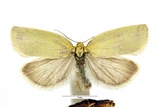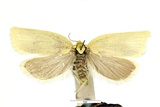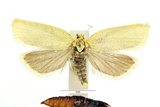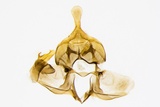Zelotherses paleana (Hübner, 1793) Species
Last modified: Nov. 22, 2025, 12:36 p.m.
A rare species in Belgium.
Details
- Classification
- Family: Tortricidae > Subfamily: Tortricinae > Tribus: Archipini > Genus: Zelotherses > Species: Zelotherses paleana
- Vernacular names
- Gele bladroller (NL), Timothy Tortrix (EN), Lieschgraswickler (DE)
- First mention in Belgium
- Lambillion L.-J. 1904c. No title. — Revue mensuelle de la Société entomologique namuroise 4: 43–44. On page 43.
- Status
-
Native
Distribution
Genitalia
In males, the thorn at the tip of the aedeagus is at 90 degrees to the body and situated on the convex side where curvature is noted. An additional thorn on the same side may be present at halfway. In the case of Z. unitana the thorn at the tip is at 45 degrees to the body and usually on the concave side when present.
Bionomics
The young larva feeds on upper parenchyma spinning two leaves together and construct a small web. This is later enlarged to form a tube about 10 cm long.
The larva feeds on flowers and leaves of the food plant and hibernates in spun leaves near the ground.
The moths can be flushed from low vegetation by day. They become active from dusk onwards and later come to light.
Flight periods
The adults have usually been observed from June till mid-August.
Observed on
- Substrates:
- Polyphagous
The larva feeds on numerous plants like Carduus, Centaurea, Cirsium, Heracleum, Plantago, Ranunculus, Vaccinium, Quercus etc...
Habitat
It inhabits waste ground, grassland, fens, heathland, scrub and dampish areas.





